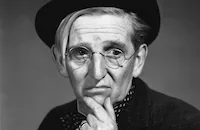Calling Philo Vance

Brief Synopsis
Cast & Crew
William Clemens
James Stephenson
Margot Stevenson
Henry O'neill
Edward Brophy
Sheila Bromley
Film Details
Technical Specs

Synopsis
The United States government unofficially asks detective Philo Vance to investigate Archer Coe, an airplane manufacturer suspected of espionage. In Vienna, Vance steals the plans for the Coe bomber and escapes from Austria, but loses the plans on the way. On his return to the United States, Vance admits that he has no solid proof of Coe's double-dealing, but says that he intends to pursue the case. Together with Philip Wrede, one of Coe's employees, Vance calls on Coe, only to discover that he is dead from an apparent gunshot wound. Although the room in which he was killed was locked from the inside, making the death appear to be a suicide, Vance suspects that Coe was actually murdered. Coe's niece, Hilda Lake, admits that he had always accused her of stealing his plans, and adds that everyone who knew him had reason to kill him, including his brother, Brisbane Coe. Wrede is in love with Hilda, but she has become engaged to Tom MacDonald. When Dr. Doremus examines Coe's body, he finds that Coe died from a knife wound rather than a gunshot wound. A short time later, Vance finds Brisbane's body in the closet and suggests that Brisbane killed Coe. The neighbor's dog wanders into the house suffering from a head wound. Vance questions the neighbor, Doris Delafield, and learns that she planned to leave the country with Eduardo Grassi, an Italian airplane designer, making them suspects. Ling Toy, one of the servants, is discovered to be an agent for the Japanese government. Then Tom is stabbed. Vance solves the mystery by explaining that the killer came through the kitchen door to the library, started an argument and struck Coe on the head. He then hit the dog who attacked him in defense of Coe. Once the dog was taken care of, the killer stabbed Coe with a dagger. Coe regained consciousness and went to the bedroom, not knowing that he had been stabbed. Later, Brisbane came home and shot Coe, making it look like suicide, and locked the door from the outside, using a trick. The killer saw Brisbane, and thinking it was Coe, killed him as well. Vance lets the injured dog loose and he attacks Wrede, revealing him to be the killer, who was trying to steal the airplane plans for a foreign government.

Director
William Clemens
Cast

James Stephenson

Margot Stevenson

Henry O'neill

Edward Brophy
Sheila Bromley

Ralph Forbes

Donald Douglas
Martin Kosleck

Jimmy Conlon
Edward Raquello
Creighton Hale
Harry Strang
Richard Kipling
Wedgewood Nowell
Bo Ling

George Irving
Frank Mayo
Rolf Lindau
Frederick Giermann
Henry Von Zynda
Hans Schumm
Henry Blair
Egon Brecher
Harry Burns
Olaf Hytten
Loia Cheaney

Maris Wrixon
De Wolfe Hopper
Eddie Graham

Herbert Anderson
Frank Wilcox
John Harron
Jack Wise
Nat Carr
Stuart Holmes
Cliff Saum

George Reeves
Marion Lessing
Crew

Film Details
Technical Specs

Articles
Calling Philo Vance
By Richard Harland Smith

Calling Philo Vance
Quotes
Trivia
Notes
The working titles of this film were Philo Vance Comes Back and Philo Vance Returns. Warner Bros. made an earlier film based on S. S. Van Dine's novel, The Kennel Murder Case, in 1933. For further information on other films featuring the "Philo Vance" character, consult the Series Index and for The Kennel Murder Case.















